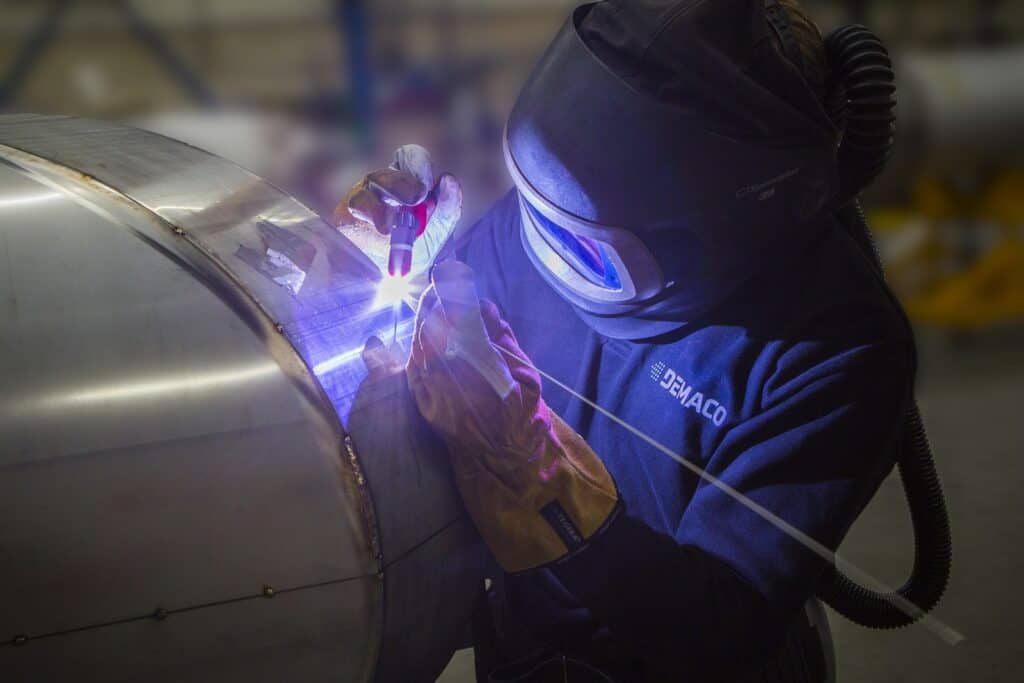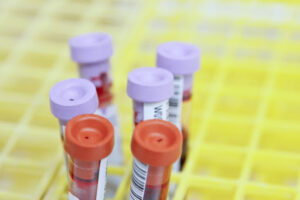Within Demaco, cryogenic technology and cryogenic engineering are at the centre of attention. Our engineers know all there is to know about cryogenic engineering and apply their engineering talent to our projects every day.
But what exactly is cryogenic engineering, and which proficiencies does a cryogenic engineer need to possess to operate in the challenging field of cryogenic engineering? In this blog, we’ll focus on five essential qualities that characterize a cryogenic engineer.
What does a cryogenic engineer do?
A cryogenic engineer is tasked with designing and specifying cryogenic projects and associated products. This could be anything from:
- Accepting customer blueprints and assessing their feasibility in respect to operation and performance
- Designing and detailing transfer lines in 2D or 3D to render them suitable for production
- Designing and implementing quality improving products, such as phase separators and subcoolers
- Designing a complete cryogenic system with matching infrastructure
When a new order comes in, the project is immediately passed on to a cryogenic engineer. Only our engineers together with the account managers can assess the feasibility of a plan.
After the first agreements are reached, the project kicks off. If required, on-site visits are made to take measurements. Alternatively, the customer’s proposal is worked out in a detailed design. Production tests then take place, followed by final documentation and certification. The engineer closely monitors each step and daily reviews the projects in which he or she is involved.
Qualities and skills of a cryogenic engineer
In addition to technical knowledge and a talent for keeping an overview, a cryogenic engineer possesses many other qualities. All of our engineers excel at the following five points:
Knowledge of boiling liquids and the associated hazards
A cryogenic engineer does not work with “ordinary” liquids but with very challenging ones. Cryogenic liquids are almost always boiling, and they differ significantly from each other in terms of densities and the degree of evaporation. Some examples of commonly used cold gases are liquid nitrogen, liquid oxygen and liquid hydrogen (LH2). For example, liquid nitrogen is used for cryopreservation or cryogenic freezing of food and medicines.
While the boiling point of one gas is around -200 °C, the other only takes on a liquid form at -250 °C. When the temperature rises above the boiling point, the liquid becomes gaseous, resulting in an increase in volume, leading to immense pressure in the infrastructure. Safety equipment is therefore essential to release any excessive pressure.
Due to the significant differences between cryogenic liquids and gases and the powerful physics reaction to the environment and equipment, the cryogenic engineer’s work requires keen technical knowledge mixed with considerable physical science expertise.
Understanding extreme cold and additional risks
The low temperatures used for cryogenic freezing are, for the general public, almost impossible to comprehend. Temperatures below -160 °C are considered cryogenic, but most of the time, the temperatures are much lower than that.
In our article on cryogenic technology, we already described some of the dangers that extreme cold can cause. These include fire hazards, injury on contact, and damage to the infrastructure due to ice build-up in cryogenic applications, cryogenic tanks or pipes.
To avoid the above-mentioned problems, a cryogenic engineer must know exactly which materials, techniques, safety measures, and certifications are necessary to safely handle extreme temperatures.

Excellent at performing flow calculations
In addition to low temperature, the right pressure is also essential for the correct functioning of a cryogenic application. Each application needs a liquid gas supply at a specific pressure. This implies that the central storage tank’s gas must reach the application’s connection point at precisely the right pressure and quality via (often) meters-long transfer lines according to a customer-specific routing. To define and regulate this pressure, flow calculations are performed.
Through flow calculations, the cryogenic engineer precisely knows at what pressure and speed the gas is flowing through an infrastructure. If, for example, the pressure decreases or the quality deteriorates sharply at the end of a long transfer line, this can be anticipated and adjusted. The engineer can, for example, decide to increase or decrease the pressure or implement quality-improving products such as phase separators, subcoolers, and automatic gas vents.
Identify problems at an early stage and provide appropriate advice
As already briefly mentioned, a cryogenic engineer’s work is not just technical; it is also about controlling and advising. Throughout the tender phase or when starting a project, the engineer often determines the project’s outline together with the client. This includes price, delivery time, materials, the available space, the distance between the tank and the application, and the gas’s required quality.
Often during this consultation, the engineer advises some improvement. For example, does the customer want thicker walled material? In this case, the engineer will check whether this is really necessary. In case vacuum insulation is needed, but there is not enough space for this, the engineer, together with the customer will investigate the best alternative. There is always a balance to be found between optimum insulation and cost.
Especially for more complex projects, early review, comprehensive calculations, and the proper support of a cryogenic engineer are essential. After all, the larger the project, the more serious the consequences of any error will be.
Ambition and curiosity
As we learned from the previous points, the work of a cryogenic engineer is quite demanding. The field is so complex that highly specialized knowledge is essential. And once this knowledge is acquired, no doubt new developments, opportunities, or even more complex problems will present themselves.
A true cryogenic engineer runs hot for new challenges in a very cold field of operations, never stops learning, and is always aware of recent market developments. This mentality makes him or her a true Cryogenius!

Top-level cryogenic enigineering
At Demaco, we work with a team of 20 cryogenic engineers. All our engineers have a mechanical engineering background, complemented with the training and certifications needed to work in the world of cryogenic engineering.
Our engineers work in various teams on diverse projects within our five business units: Piping, Systems, Plants (air separation units and LNG), Science (helium & hydrogen), and vacuum technology. Each business unit presents its specific challenges, which our engineers are perfectly attuned to. While one of our engineers may be designing transfer lines for biobanks and cryopreservation, another may work on a multi-year hydrogen project.
Nothing is too farfetched for our talented engineers, and we can truly label the work of our engineers -Cryogenius- “cryogenic engineering at its best.”
Want to know more?
Do you have questions about cryogenic engineering, the work of our engineers and our cryogenic projects? Feel free to contact us or browse through our products and projects for more information.




